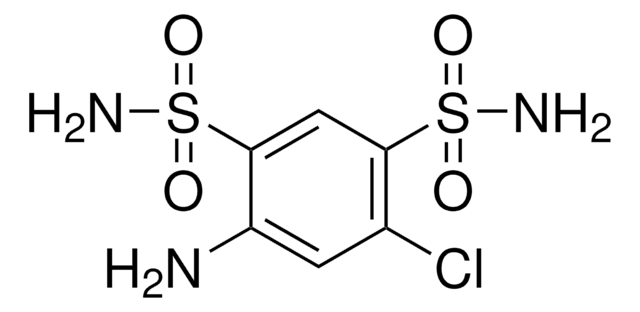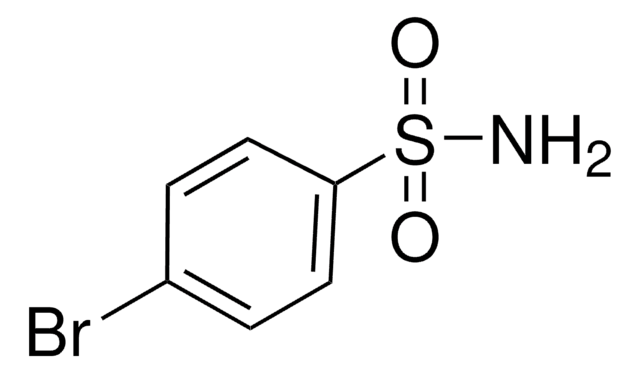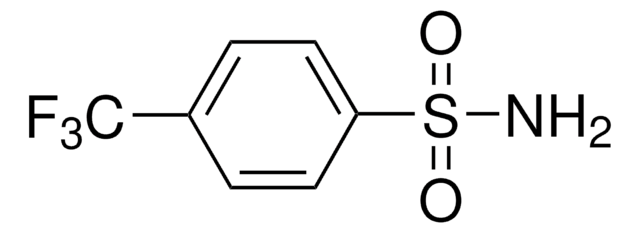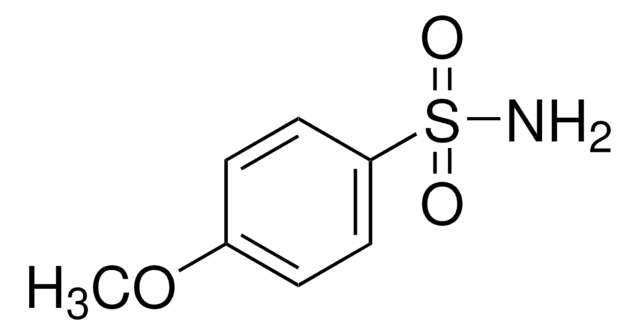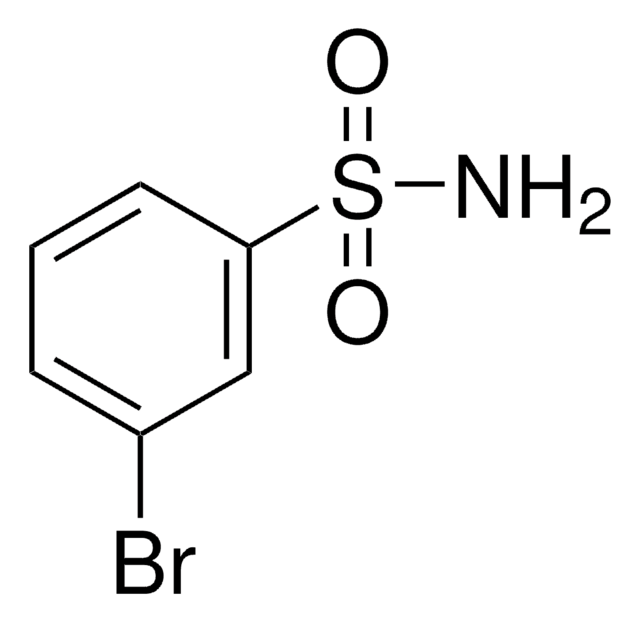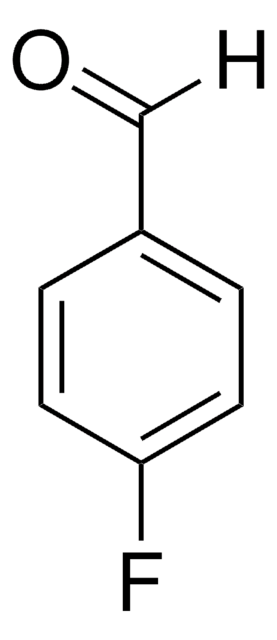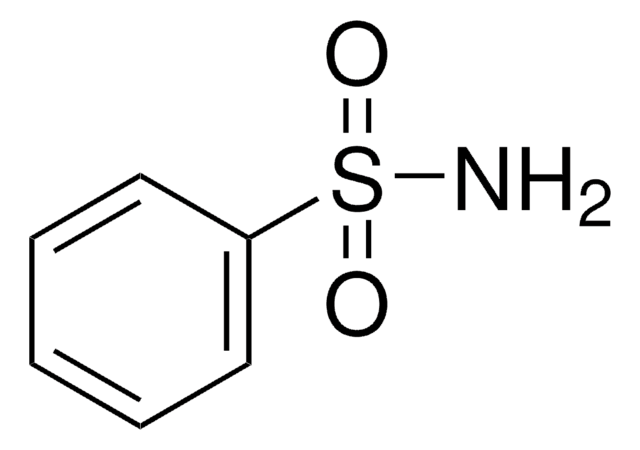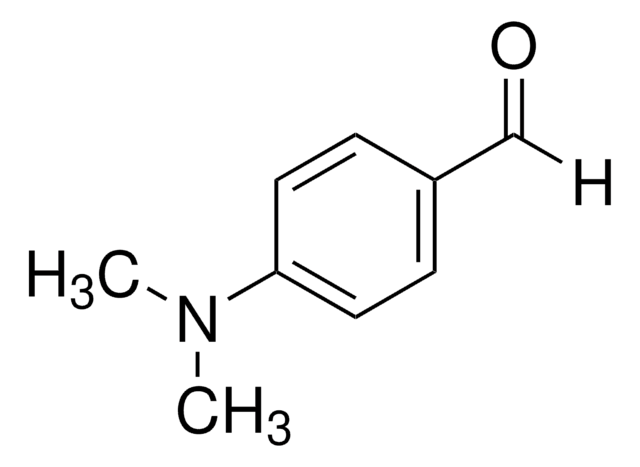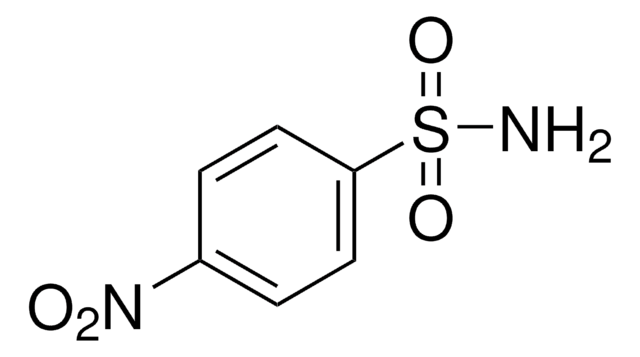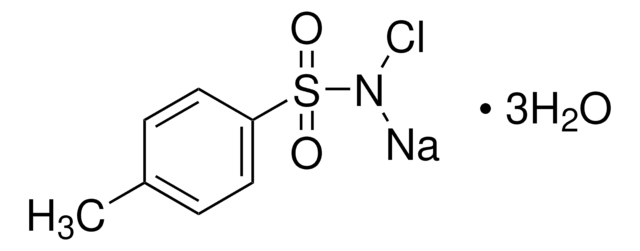All Photos(3)
About This Item
Linear Formula:
ClC6H4SO2NH2
CAS Number:
Molecular Weight:
191.64
Beilstein:
1308891
EC Number:
MDL number:
UNSPSC Code:
12352100
PubChem Substance ID:
NACRES:
NA.22
Recommended Products
Assay
98%
form
powder
mp
140-144 °C (lit.)
SMILES string
NS(=O)(=O)c1ccc(Cl)cc1
InChI
1S/C6H6ClNO2S/c7-5-1-3-6(4-2-5)11(8,9)10/h1-4H,(H2,8,9,10)
InChI key
HHHDJHHNEURCNV-UHFFFAOYSA-N
Looking for similar products? Visit Product Comparison Guide
Signal Word
Warning
Hazard Statements
Precautionary Statements
Hazard Classifications
Eye Irrit. 2 - Skin Irrit. 2 - STOT SE 3
Target Organs
Respiratory system
Storage Class Code
11 - Combustible Solids
WGK
WGK 2
Flash Point(F)
Not applicable
Flash Point(C)
Not applicable
Personal Protective Equipment
dust mask type N95 (US), Eyeshields, Gloves
Choose from one of the most recent versions:
Already Own This Product?
Find documentation for the products that you have recently purchased in the Document Library.
C R Clark et al.
Epilepsia, 31(4), 474-479 (1990-07-01)
The anticonvulsant and toxic properties of 4-chlorobenzenesulfonamide (ADD 55051) were compared with phenytoin (PHT), phenobarbital (PB), ethosuximide (ESM), and valproate (VPA). These compounds were evaluated in mice and rats using well-standardized anti-convulsant test procedures. The results indicate that ADD 55051
Determination of the content of 2-chlorobenzenesulphonamide and bis(p-chlorophenyl) sulphone in 4-chlorobenzenesulphonamide.
E R Ventre
Journal of chromatography, 333(1), 253-255 (1985-09-27)
Yohei Munei et al.
Bioorganic & medicinal chemistry letters, 21(1), 141-144 (2010-12-07)
We proposed a novel QSAR (quantitative structure-activity relationship) procedure called LERE (linear expression by representative energy terms)-QSAR involving molecular calculations such as ab initio fragment molecular orbital and generalized Born/surface area ones. We applied LERE-QSAR to two datasets for the
Padmakar V Khadikar et al.
Bioorganic & medicinal chemistry letters, 15(4), 931-936 (2005-02-03)
A novel use of NMR chemical shift of the SO(2)NH(2) protons (in dioxane as solvent) as a molecular descriptor is described for modeling the inhibition constant for benzene sulfonamides against the zinc enzyme carbonic anhydrase (CA, EC 4.2.1.1). The methodology
Our team of scientists has experience in all areas of research including Life Science, Material Science, Chemical Synthesis, Chromatography, Analytical and many others.
Contact Technical Service